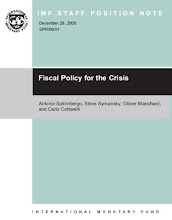India slips two places in new report
Even though India has grown at a scorching pace of over 9% in the recent years, and is expected to grow at around 8% in the current year, doing business in India is still tough. According to the 'Doing Business Report 2009' prepared jointly by the International Finance Corporation and the World Bank, India has slipped two places to 122nd rank.
Another important thing to notice is that even though, India has considerable economic clout against its neighbors, still Pakistan, Bangladesh and even Nepal rank higher than India in doing business. Pakistan ranks 77th place, Bangladesh 110th and Nepal is at 121st position. In terms of number of days to set up an enterprise, however India has an advantage over Bangladesh and Sri Lanka. According to the report, it takes 30 days to set up a business in India, 73 in Bangladesh and 38 in Sri Lanka. Interestingly, the report added that an entrepreneur can start a business in 9 days in Afghanistan and Maldives, and in 24 days in Pakistan. Closing a business enterprise in India also proves to be tough task, as per the report, insolvency procedure in India may take 10 years as compared to 5 in Nepal and 2.8 in Pakistan.
Among other parameters, it takes about fours years to enforce a contract in India as compared to less than six months in Singapore. The cost of enforcing a contract in India could be as high as 40% as against 24% in Pakistan and 23% in Sri Lanka. Procedures to enforce a contract, the report said, are equally cumbersome in Pakistan, Bhutan and Bangladesh. However at trade policy India beats its neighbors. According to the report, it takes 17 days to export as compared to 24 in Pakistan, 41 in Nepal and 74 in Afghanistan. Similarly, it takes 20 days to import goods into India as against 32 in Bangladesh and 35 in Nepal. It may take 77 days to import goods in Afghanistan.
On the international front, Singapore continued to garner 1st place in the ranking, which covered 181 countries of the world that provides quantitative measure of regulation for starting a business, getting credit, paying taxes, enforcing contracts and closing a business.
This report also states the importance of India as a country, and a market in the global economy, even though doing business in India is tough, still the country is able to grow at above 8% per annum as business are fighting this tough task to initiate and grow the business in the country.



